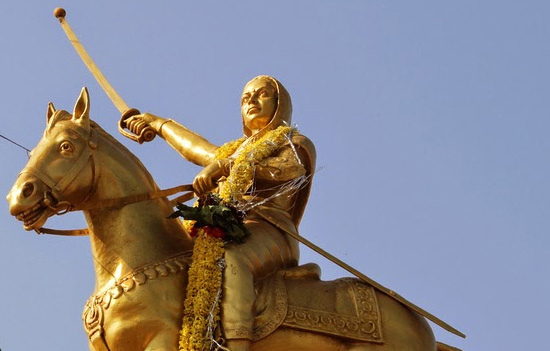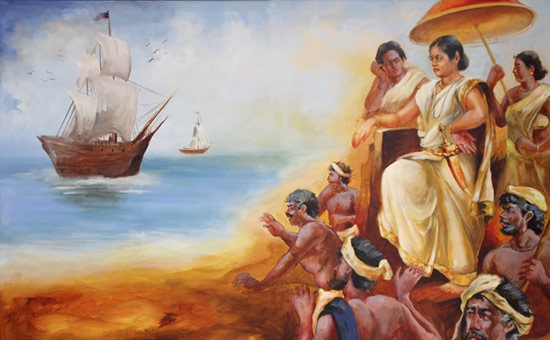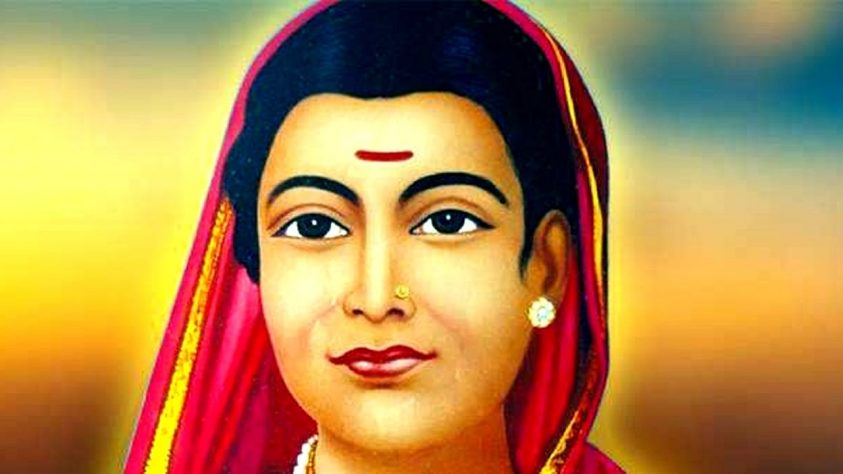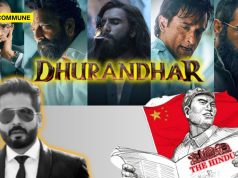
We pay tributes to the great freedom fighters like Mahatma Gandhi, Jawaharlal Nehru, Sardar Vallabhbhai Patel, Bhagat Singh, Chandra Shekhar Azad, Subhash Chandra Bose and many more. We also remember the sacrifices of the famous women of our nation like Kasturba Gandhi, Kamala Nehru, Sarojini Naidu, Annie Besant, Vijayalakshmi Pandit, Swarup Rani Nehru, Sucheta Kripalani, Rani Lakshmi Bai, Ammu Swaminathan and Captain Lakshmi Sehgal during the freedom struggle.
But here are a few women freedom fighters whom you possibly had never about before.
1. Matangini Hazra
Matangini was born in West Bengal and she played a vital role in the Quit India Movement, Civil Disobedience Movement and Non-cooperation movement. She was fondly called ‘Gandhi Buri’ (Old Lady Gandhi). She was shot dead by the British in Tamluk, Midnapore District in 1942, when she led a procession of 6000 supporters during the Quit India Movement, holding the tricolour and chanting Vande Mataram.
The first statue of a woman freedom fighter put up in Kolkata in 1977 was of Matangini. A road is also named after her in Kolkata.
2. Jhalkari Bai
Jhalkari Bai was skilled in archery and swordplay. Her husband was a soldier in the Jhansi army. Legend has it that she killed a tiger with an axe and challenged a gang of dacoits. Her resemblance to Rani Lakshmi Bai and her fighting tactics led her to join the women’s brigade of Jhansi called ‘Durga Dal’.
She played a crucial role in the Battle of Jhansi, as she disguised herself as Rani Lakshmi Bai, took command of the Army and gave the real queen a chance to escape. Jhalkari Bai’s role marked the participation of Dalit women (Viranganas) in the First War of Independence.
3. Rani Durgawati

A brave queen of Gondwana (M.P.), she started ruling the kingdom in her son’s name, after her husband’s death. When Mughal General Asaf Khan attacked her kingdom, she entered the battlefield. She fought till her last breath and killed herself when defeat was imminent. Rani Durgavati’s martyrdom day, 24 June, is celebrated as ‘Balidan Diwas’. She was honoured with a stamp and the Madhya Pradesh government renamed the University of Jabalpur as Rani Durgavati Vishvavidyalaya.
4. Begum Hazratmahal
She was the wife of Nawab Wajid Jhalkari Bai Ali Shah. She is known for uprooting the British from Awadh. Begum Hazrat Mahal encouraged rural people to unite and fight against the British in the events of 1857. A stamp was released in 1984 in her memory.
5. Rani Avantibai Lodhi

She was the queen of Ramgarh in Madhya Pradesh. When King Vikramjeet, her husband, fell sick, she raised an army of over 4000 troops to fight against the British troops during the First War of Independence in 1857. She was the first Indian queen who fought a guerilla war for more than a year. When the number of British troops increased, she was left with no choice other than to surrender. But she preferred martyrdom and killed herself in the forest outside Ramgarh. A stamp was released in Rani Avanti Bai’s name and a statue was erected in Balaghat.
6. Rama Devi Choudhary
Inspired by Gandhiji, she joined the Independence Movement in 1921. She was imprisoned many times after participating in the Salt Satyagraha movement. She was also a social reformer. She established training centres for tribals, worked for famine relief and protested against the Emergency.
Rama Devi was fondly called “Maa” by the people of Odisha. The Rama Devi Women’s University in Bhubaneswar was named after her.
7. Durga Bai Deshmukh
She was a follower of Gandhiji and also a lawyer. She participated in the Satyagraha. She was elected to Lok Sabha and planning commission as a member. Durga Bai also formed the Social Welfare Board to rehabilitate and improve the condition of women and children. She is a Padma Vibhushan Awardee.
8. Rani Gaidinliu

She was born in Manipur and at the age of 13, she started to preach to the people of her tribe. Later she joined her cousin Haipou Jadonang who led the Heraka Movement against the British, at the age of 17 and was sentenced to 14 years long imprisonment. Rani Gaidinliu was not a queen. The prefix ‘Rani’ was given to her following a newspaper interview in which she was described as ‘Queen of the Hills’.
The sacrifices of this Rani of Nagas was fondly acknowledged by Nehruji. A stamp was issued in 1996 and a coin was issued in 2015 in her memory.
9. Uda Devi
She was born in Lucknow. Begum Hazrat Mahal helped her form a women’s battalion under her command. She fought bravely in the war along with her husband. Uda Devi climbed a pipal tree from where she shot dead around 36 British soldiers. In recognition of her bravery, British officers like Colin Campbell bowed their heads with respect over her dead body. Along with other female Dalit participants, she is remembered as a Dalit Veerangana of 1857.
Uda Devi’s statue can be seen in the square outside Sikander Bagh in Lucknow.
10. Madam Bhikaji Cama
Born in Bombay, she was a great freedom activist, social worker and philanthropist. She was the founder of Indian Home Rule. She wrote, published and distributed revolutionary literature. Madam Bhikaji gave away all her assets to set up an orphanage for young girls. She designed a flag and was the first woman to hoist the tricolour. As an Indian ambassador, she travelled to Germany in 1907 to hoist the Indian freedom struggle flag at the International Socialist Congress.
11. Aruna Asaf Ali
Born Aruna Ganguli, she married Asaf Ali, a prominent member of the Indian National Congress. She fought for the rights of political prisoners in Tihar Jail. In 1942, she hoisted the Indian flag during the Quit India Movement at Gowalia Tank Maidan in Bombay. Aruna Asaf Ali is known as the ‘Grand Old Lady’ of the Independence Movement. A Bharat Ratna Awardee, she served as Delhi’s first mayor.
12. Kittur Rani Chennamma
She was the queen of Kittur (Karnataka) who raised her voice against British rule 33 years before the national uprising. She belonged to the Lingayat community and was one of the first freedom activists. Rani Chennamma was trained in horse riding, sword fighting and archery from a young age. She led an armed rebellion against the British policy, Doctrine of Lapse in 1824 and lost her life on the battleground. She became a folk heroine in Karnataka.
Her statues can be seen in Kittur, Bengaluru, Belagavi, Hubballi and also in the Indian Parliament.
13. Belawadi Mallamma

She was the daughter of King Madhulinga Nayaka of Sode or Sonde in Karnataka, and wife of Prince Isaprabhu. During a war between her kingdom (Belawadi) and the Marathas, her husband was killed. But she picked up the sword and fought along with her army. She was the first woman to form a women’s army in the 17th century. The battle lasted for 27 days. She was captured but later Chhatrapati Shivaji released her after seeing her bravery. It is said that when Mallamma attacked, she looked like Goddess Jagadamba to Shivaji.
14. Umabai Kundapur
She was married at the age of nine and her father-in-law encouraged her to complete her studies. She was the founder of Bhagini Mandal and leader of the women’s wing of Hindustani Seva Dal. She provided shelter to freedom fighters. Umabai was an example of selfless service. She refused all honours and voluntary posts that came her way. Gandhiji appointed her as the agent for the Karnataka branch of Kasturba Trust.
15. Rani Abbakka Chowta

She is one of the first female freedom fighters. She was from the Chowta dynasty and ruled a small coastal town called Ullal, 8 km from Mangalore. She fought against the Portuguese who wanted to capture the town. An annual celebration is held each year in Ullal in memory of the queen. Rani Abbakka is also called ‘Abhaya Rani’ (fearless queen) because of her valour.
16. Keladi Chennamma
She became the queen of Keladi after marrying Soma Sekhara Nayak. She gave shelter to Rajaram, Shivaji’s second son, when he was escaping the Mughals. She fought and defeated the Mughal army sent by Aurangazeb. At the end of the war, the Emperor signed a treaty and recognised Keladi as a separate kingdom.
17. Rani Velu Nachiyar

She was the 18th century queen of Sivaganga in Tamil Nadu. Trained in archery, martial arts and horse riding, she was also a scholar in many languages. After her husband’s death, she managed to escape with her infant daughter. Determined to get back her kingdom, she built an army of women (Udaiyal) and trained them in warfare. Haider Ali lent her support. Her commander-in-chief Kuyili’s sacrifice as a human bomb helped Rani Velu in defeating British. A stamp was released in her memory by the Indian Postal Service.
Rani Velu is remembered as ‘Veera Mangai’ due to her bravery. Some scholars refer to her as the ‘Joan of Arc of India’. Grand dance ballets were composed in her honour.
18. Kuyili
She was a Dalit woman warrior and army commander of Queen Velu Nachiyar. She is remembered as the first suicide bomber and first woman martyr in Indian history. She led her army against the British. Drenched in oil she set herself on fire sacrificing her life. She is remembered as ‘Veerathalapathy’ (Brave Commander).
19. Janaky Athi Nahappan
She was a Tamilian and the founding member of Malaysian Indian Congress. She donated her gold earrings and was determined to join the Army as per Subhash Chandra Bose’s appeal for the independence of India. She was one of the first women to join the Indian National Army (INA).
Janaky was also a welfare activist and was awarded the Padma Shri in 2000 by the Government of India.
20. Kamala Devi Chattopadhyay
She was born in Mangalore and was the first woman in India to contest for political office for a seat in Madras Legislative Assembly. Kamala Devi excelled in several roles as a freedom fighter, handicraft enthusiast, feminist, social reformer and theatre actor. She enrolled in Indian National Congress, joined the Seva Dal and quickly rose in ranks. She founded the AIWC (All India Women’s Conference). Kamala Devi participated in the Salt Satyagraha. She refused government posts and dedicated her life to humanitarian services.
21. Tara Rani Srivastava
She was born in Saran (Bihar). She actively participated in the Quit India movement in 1942 along with her husband Phulendu Babu. They formed a crowd outside Siwan police station to hoist the Indian flag. Her husband was shot. But Tara bandaged his wounds and continued to march with courage shouting ‘Inquilab’ and holding the Indian flag. Her husband died, but she continued to support the freedom struggle.
22. Kanaklata Barua
During the Quit India Movement in 1942 at Baranga Bari, she stood at the head of a group of women volunteers with the national flag in hand, as part of ‘Mrityu Bahini’ (Death Squad). She aimed to hoist the flag at the Gohpur police station but was stopped. The British shot her and at the age of 18, she became a martyr. Kanaklata was the youngest Indian female martyr and is also called ‘Birbala’ (Brave Daughter) of Assam.
A ship, ‘CGS Kanaklata Barua’ was commissioned by the Indian Coast Guard in 1997 in her memory.
23. Nellie Sengupta
She was an Englishwoman born in Cambridge, UK. As a young girl, she fell in love with Jatinder Mohan Sengupta, a young Bengali student. After marriage they returned to Calcutta. Sengupta was a lawyer and he decided to join the freedom movement started by Gandhiji. Nellie supported him and went door to door to sell khadi. She was appointed as the President of Congress when many senior leaders were arrested during the Salt Satyagraha.
24. Mata Bhag Kaur (Mai Bhago)
She was the daughter of a landowner in Amritsar. She led a Sikh army of 40 men in the Battle of Muktsar in 1705 against 10,000 Mughals. She also served as the personal bodyguard of Guru Gobind Singh during his years of exile.
25. Savitribai Phule

She was India’s first female teacher at India’s first girl’s school. Born in Naigaon, Maharashtra, she was a social reformer. In the 19th century, she dared to break the stereotypes of society during the British regime with the support of her husband, Jyotirao Phule. She brought about social reform in Maharashtra by educating women.
26. Basanti Devi
She was among the first women to be jailed under British rule for involvement in the freedom struggle. After the arrest of her husband Chittaranjan Das in 1921, she joined the freedom struggle. She took part in the Khilafat movement, Civil Disobedience Movement etc. When Lala Lajpat Rai was killed by police, Basanti Devi called on the Indian youth to avenge his death. She collected gold coins for the Tilak Swaraj Foundation.
27. Moolmati
Ramprasad Bismil was in the Hindustan Socialist Republican Association in 1928 along with Bhagat Singh, Raj Guru, Azad and others. Moolmati was the mother of Ramprasad Bismil. She was proud of her son who was hanged to death by the British. She addressed a public gathering and offered her other son to the freedom movement.
28. Onake Obavva

Obavva was the wife of a guard at Chitradurga Fort. The sultan of Mysore, Haider Ali, was trying to capture the fort. He ordered his men to use a secret passage to enter the fort. Obavva noticed this activity and used a long wooden club called ‘onake’ and killed over 100 men. Her husband was away for lunch. When he returned he was shocked to see his wife standing with a blood stained onake near the dead bodies.
There were many such women warriors in the history of our country. These brave and intelligent women fought with undaunted courage and sacrificed their lives for the nation so that future generations could live in a free country. These unsung women of dedication and unshakable spirit deserve our heartfelt acclaim for their valour and courage.
This article was first published in the Bhavan’s Journal, August 15, 2022 issue. This article is courtesy and copyright Bhavan’s Journal, Bharatiya Vidya Bhavan, Mumbai-400007. eSamskriti has obtained permission from Bhavan’s Journal to share.
This article was later published in eSamskriti and has been republished here with permission.
Click here to subscribe to The Commune on Telegram and get the best stories of the day delivered to you personally.





